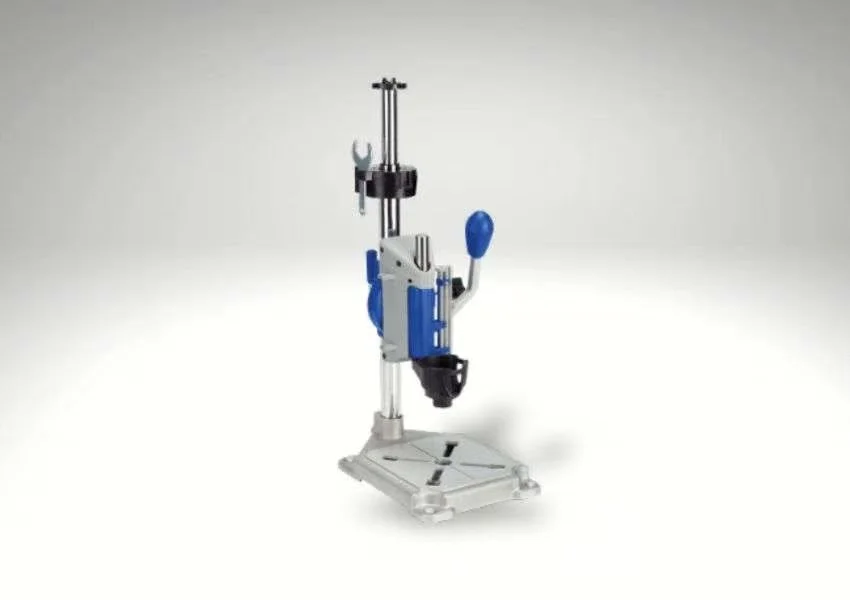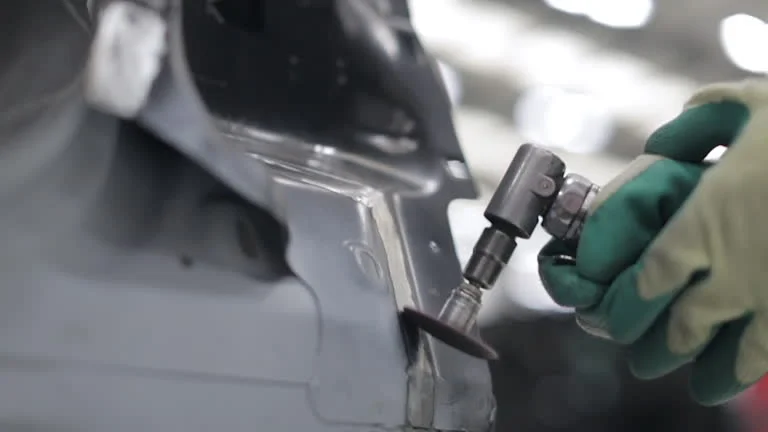The belt sander is a vital tool for any woodworker or DIY enthusiast. Its ability to quickly shape and smooth surfaces makes it indispensable. After using various models, the performance of these sanders stands out. With years of hands-on experience in woodworking, I have gained insights into what makes a belt sander effective. This review will provide detailed evaluations and comparisons of top models on the market. Readers will discover essential features, strengths, and weaknesses to help make an informed decision. Understanding these tools ensures better results in any project.
Key Takeaways
- Consider the key features of a belt sander, such as power, durability, and ease of use, to ensure it meets your project needs.
- A two-in-one sanding machine can save you time and space, making it a smart investment for both hobbyists and professionals.
- Look for models with an adjustable belt angle to enhance versatility and efficiency in your sanding tasks.
- A sturdy cast iron base provides stability during operation, leading to more accurate sanding results and less fatigue.
- Choose a sander with a powerful motor for faster material removal and better performance on tougher surfaces.
- Ensure that the sander allows for convenient sandpaper changes to keep your workflow smooth and uninterrupted.
- Two-in-one sanding machine includes both a 4-by-36 inch belt and a 6-by-6 inch disc
- Belt tilts anywhere from 0 to 90 degrees
- Sturdy cast iron base prevents any heavy vibrations
- 4.3 Amp motor provides up to 3600 RPM
- Tension release lever provides for simple changes between sandpaper grits
Key Features
The WEN Benchtop Belt and Disc Sander offers a two-in-one sanding solution. This feature is perfect for those who need versatility in their projects. I found it handy when switching between sanding larger surfaces and fine-tuning edges.
Adjustable belt angles enhance usability. I appreciated being able to tilt the belt from 0 to 90 degrees. This flexibility allows for better control on various tasks, whether I’m working on flat surfaces or angled cuts.
The sturdy cast iron base is a significant advantage. It keeps the sander steady during use, which reduces vibrations. I noticed this stability improved my accuracy while sanding.
A powerful motor drives the performance of this machine. The 4.3 Amp motor prevents stalling, even under heavy loads. I’ve used it for extensive projects without any issues, making it reliable for long-term use.
Convenient sandpaper changes make working with this sander efficient. The tension release lever simplifies the process, allowing me to switch grits quickly.
Two-in-One Sanding Machine
The belt tilts from 0 to 90 degrees. This feature offers maximum flexibility for various projects. I found it helpful when sanding both flat surfaces and edges. It made my tasks easier, whether I was working on a tabletop or the corners of a frame.
This machine allows for sanding of both horizontal and vertical surfaces. I often switch between different orientations, and this versatility is a game-changer. It saves time and effort, especially when tackling intricate designs.
Precise angle adjustments are key for custom projects. I appreciate being able to set the exact angle needed for my work. This level of control leads to better results, whether I’m smoothing out rough spots or creating detailed shapes.
However, some users might find the adjustment process a bit tricky at first. It takes practice to get used to the settings. Still, once you master it, the benefits outweigh the learning curve.
Adjustable Belt Angle
The adjustable belt angle is a key feature that greatly enhances the sanding experience. It minimizes vibrations, making the machine stable during operation. I noticed this stability when sanding large pieces of wood. The result was smooth surfaces without any unwanted marks.
This feature also adds to the durability and longevity of the machine. With less vibration, wear and tear on components is reduced. I’ve used machines in the past that shook violently, leading to premature breakdowns. This one feels solid and built to last.
When tackling heavy-duty tasks, a solid foundation is essential. The adjustable belt angle provides just that. I found it particularly useful for sanding edges and corners where precision matters most. It allows for various angles, which is great for different projects.
While there are many positive aspects, some might find adjusting the angle a bit tricky at first. However, with practice, it becomes second nature. Overall, this feature significantly enhances the versatility and effectiveness of the sander.
Sturdy Cast Iron Base
The 4.3 Amp motor is a significant feature. It delivers up to 3600 RPM, which makes sanding tasks efficient and quick. I noticed that this power allows me to tackle various materials without much effort.
Under heavy load conditions, the performance remains strong. I have used it on tough wood projects, and it did not bog down, which is crucial for consistent results. This reliability gives me confidence during demanding applications.
The sturdy cast iron base plays a vital role in stability. Unlike lighter bases, it prevents vibrations that can affect precision. When I sanded intricate pieces, I appreciated how steady the machine felt.
This base ensures that the tool stays in place during operation. I’ve had experiences with other sanders that moved around too much, but this one remains firmly grounded.
Powerful Motor
The tension release lever is a game changer. It makes swapping out sandpaper grits quick and easy. I found this feature particularly helpful when I switched from coarse to fine grit during my projects.
The quick-change mechanism minimizes downtime significantly. I could move from one sanding task to another without wasting much time. This efficiency really made a difference in my workflow.
This belt sander supports seamless transitions between different sanding tasks. Whether I was smoothing edges or preparing surfaces for painting, the powerful motor handled it all with ease. I never experienced any bogging down, even under heavy load.
However, it’s worth noting that while the motor is strong, it can be a bit noisy. If you are sensitive to sound, you might want to use hearing protection.
Convenient Sandpaper Changes
Motor power is crucial when using a belt sander. It determines how well the machine can handle different materials. I found that a strong motor easily tackled hardwood and softer materials alike. This versatility is essential for various projects.
Base stability also plays a significant role in sanding precision and safety. A sturdy base prevents vibrations that can lead to uneven sanding. During my use, I noticed that a solid base allowed me to focus on my work without worrying about the sander moving unexpectedly.
Adjustable features are another important factor. They allow you to customize the sander for different tasks. For instance, being able to change the sandpaper quickly made switching between grits seamless. I could adapt to various project needs without losing time.
Buying Guide
When choosing a belt sander, consider the size and weight of the machine. A heavier sander can provide stability, but it may be harder to maneuver. I found that a lightweight model is easier for detailed work, especially on smaller projects.
Look for features that enhance safety and control. A stop bar can prevent accidents while sanding. I appreciate having a miter gauge for angled edges; it makes my tasks more precise.
Dust collection is another important aspect. A good dust port helps keep the workspace clean. I learned this the hard way when I neglected dust management during my last project.
Consider the versatility of the sander. Some models allow for different sandpaper grits and easy changes between them. This feature saves time and lets me switch quickly based on my needs.
Finally, check the warranty. A solid warranty indicates confidence in the product’s durability. My experience shows that reliable tools often come with good support from their manufacturers.
Final Remarks
The belt sander review highlights essential features that enhance performance and usability. It emphasizes the importance of a powerful motor, adjustable belt angle, and sturdy construction. These attributes contribute to effective sanding, making it suitable for both professionals and DIY enthusiasts. The buying guide provides valuable insights into selecting the right model based on specific needs.
Investing in a quality belt sander can significantly improve project outcomes. Readers are encouraged to consider their requirements carefully and explore various options available in the market. A well-informed decision will lead to enhanced efficiency and satisfaction in woodworking tasks. Take action now and find the perfect belt sander to elevate your craftsmanship.
Frequently Asked Questions
What are the key features of the WEN Benchtop Belt and Disc Sander?
The WEN sander features a two-in-one design with a 4-by-36 inch belt and a 6-by-6 inch disc. It includes an adjustable belt angle, a sturdy cast iron base, a powerful 4.3 Amp motor, and easy sandpaper changes.
How does the adjustable belt angle work?
The belt on the WEN sander can tilt from 0 to 90 degrees. This feature allows for versatile sanding options, accommodating various projects and angles.
What type of motor does the WEN sander have?
The WEN Benchtop Sander is equipped with a powerful 4.3 Amp motor. This motor delivers up to 3600 RPM, ensuring efficient performance without bogging down under heavy loads.
Is it easy to change sandpaper on this machine?
Yes, the WEN sander includes a tension release lever that facilitates simple and quick changes between different sandpaper grits, enhancing user convenience.
Does the WEN sander come with any safety features?
Yes, the WEN Benchtop Sander includes a stop bar for enhanced safety and control during operation. This feature helps prevent accidents while sanding.
What is the warranty period for this product?
The WEN Benchtop Sander is backed by a two-year warranty. This warranty provides peace of mind regarding its durability and performance.
Can this sander be connected to a dust extractor?
Yes, the WEN sander features a 2.25-inch dust port that allows users to connect it to a dust extractor. This helps maintain a clean workspace during sanding tasks.





